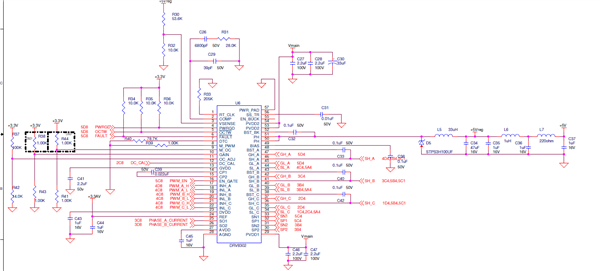Hello TI E2E Team,
I have a customer that is running into some overcurrent phase faults using the DRV8711. I read through most of the forum discussions but couldn't seem to find what my customer is running in to. The motor can run for some amount of time before the faults triggers, seconds to minutes depending on current settings and motor loads and resonance. They have put together a very detailed summary of their issue in the attachment. Any expert advise or assistance would be much appreciated!
Thanks Team!


